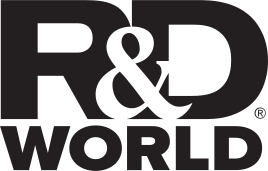The R&D World Index (RDWI) for the week ending August 11, 2023, closed at 2,973.65 for the 25 companies in the RDWI. The Index was up 2.35% (or 68.35 basis points). Thirteen of the 25 RDWI members gained value last week from 0.34% (Roche Holdings) to 17.53% (Eli Lilly & Co.). Twelve of the 25 RDWI members lost value last week from -0.71% (Intel) to -7.33% (General Motors).
Taiwan Semiconductor Manufacturing Company (TSMC), Hsinchu City, Taiwan, announced last week that it will build its first European chip factory in Dresden, Germany. The plant will be a joint venture with several EU (European Union) chip companies, including Bosch (Gerlingen, Germany), Infineon (Neubiberg, Germany), and NXP (Eindhoven, Netherlands). TSMC will invest about $3.8 billion of the $11 billion total cost of the plant (including government support). Construction of the German plant is expected to begin in late 2024, with production beginning by the end of 2027. German government subsidies will help to offset regional German disadvantages, including higher operating costs (than in Taiwan) and the relative scarcity of skilled workers required to build and operate a chip fab in Europe (compared to Taiwan). TSMC last week announced it will delay completion of a similar fab in Arizona for similar reasons. Local Arizona trade unions are also fighting U.S. visa grants to skilled Taiwanese workers that TSMC wants to bring to the U.S. to support their plant construction and operation.
RDW Index member Pfizer, New York City, is seeing revenues fall from its COVID-19 vaccine as sales plummet. The company is waiting for new drugs to come to market and recent deal making to pay off. The company stated that it will cut R&D investments if the new drugs do not make up for the falling COVID-19 sales. COVID-19 vaccine sales are down in 2023 because governments have purchased fewer contracts and the U.S. is transitioning to a commercial market. Doctors are also writing fewer vaccine prescriptions.
U.S. technology startups are being hurt by a drop in traditional venture funding, according to Everywhere Ventures, New York City. Venture capitalists say they are avoiding funding new businesses that lack clear signs of revenue growth or a path to profitability. Investment in U.S. tech startups declined 49% in the year ended June 30, 2023, according to data from PitchBook, Seattle. Investors also cut back funding by 50% in 2Q to $10 billion. The pullback has accelerated a wave of new startup closures.
Despite the issues noted above in the funding of technology startups, biotechnology mergers and acquisitions (M&A) are rebounding according to financial services firm Stifel Financial Corp., St. Louis. This is due to many drugs which will soon lose patent protection and the need for biotechs to find alternative revenue sources. Worldwide biotech M&A reached $93 billion in the first half of 2023, the busiest year since 2019. Through early July 2023, there were 22 biotech acquisitions in the U.S., Canada, and Western Europe.
The wind energy business is facing its first major financial crisis as buyers of wind energy scrap energy contracts, delay or cancel new projects and postpone investment decisions. Over the past two months, at least 10 offshore wind farm projects totaling $33 billion in planned spending have been delayed in the U.S. and Europe, according to Equinor, Stavanger, Norway. Equinor and BP are developing wind farms off the coast of New York state and now need to renegotiate power prices due to increasing costs or else the project won’t get the needed construction financing.
Tyson Foods, Springdale, Arkansas, announced last week that it plans to shut down four plants in Indiana, Missouri, and Arkansas, shifting production to other plants to cut costs. Reasons for these cuts include an inability to hatch enough chickens to meet demand, staffing shortages, falling chicken prices, shrinking cattle sources, and increasing overall costs. The company has posted a loss for its last accounting quarter and previously closed two plants in Arkansas and Virginia, laying off 1,700 workers. Earlier the company said it would eliminate 15% of its senior leadership and 10% of its corporate roles.
China’s exports fell dramatically in July 2023 due to shrinking global demand for its products and negatively affecting China’s growth plans. Tension between the U.S. and China has also resulted in U.S. companies sourcing their needs in other non-China countries. Chinese shipments fell 14.5% in July 2023 from July 2022, the steepest decline since February 2020, in the early days of the COVID-19 pandemic, according to data from China’s General Administration of Customs. China’s beleaguered housing market also showed signs of distress last week.
South Korea’s Ministry of Science and ICT sent emails last week to research institutes that their funding for research projects will be smaller in the upcoming year than initially planned. The Electronics and Telecommunications Research Institute was informed of a 29% reduction in funding, while the Korea Institute of Science and Technology was notified of a 23% cut. Scientific societies were also informed that they may face up to a 70% reduction in funding from the government. Reasons for the cuts were noted as being the response to insufficient tax revenues.
R&D World’s R&D Index is a weekly stock market summary of the top international companies involved in R&D. The top 25 industrial R&D spenders in 2020 were selected based on the latest listings from Schonfeld & Associates’ June 2020 R&D Ratios & Budgets. These 25 companies include pharmaceutical (10 companies), automotive (6 companies), and ICT (9 companies) which invested a cumulative total of nearly 260 billion dollars in R&D in 2019, or approximately 10% of all the R&D spending in the world by government, industries, and academia combined, according to R&D World’s 2021 Global R&D Funding Forecast. The stock prices used in the R&D World Index are tabulated from NASDAQ, NYSE, and OTC common stock prices for the companies selected at the close of stock trading business on the Friday preceding the online publication of the R&D World Index




My personal experience is probably not unique, but we have cut back significantly in R&D even though R&D is the principal driver of our growth. When Congress FAILED to repeal the poisoned pill in the legislation from 2018 that “made the R&D tax credit permanent”, my pass-through (S-corp) tax return K1 went from providing me with a $35K refund for 2022 to a $650K tax liability. My accountant is “working on it” but I’ll be pulling all my remaining basis just to cover the taxes. How I will manage the now overdue estimate payments, penalties and interest is another question entirely.
Accordingly, I am at ZERO R&D for the foreseeable future.